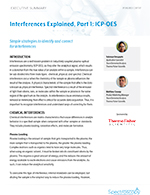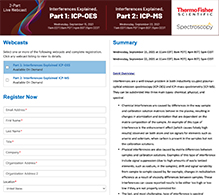|
|
|
|
|
Interferences are a well–known problem in inductively coupled plasma–optical emission spectrometry (ICP–OES), as they alter the analytical signal, which results in a deviation from the true value of an analyte within a sample. Interferences can be sub–divided into three main types: chemical, physical, and spectral. Chemical interferences occur when the chemistry of the sample or plasma influences the result of the analysis. A physical characteristic of the sample that affects the data is known as physical interference. Spectral interference is a result of the emission of light from atoms, ions, or molecules within the sample or plasma in the same region of the spectrum as the analyte. As interferences cause erroneous results, removal or minimizing their effect is critical for accurate data acquisition. Thus, it is important to recognize interferences and understand ways of correcting them. Download executive summary to read more.
|
|
|
|
|
|
|
|
|
|
|
|
|
|




